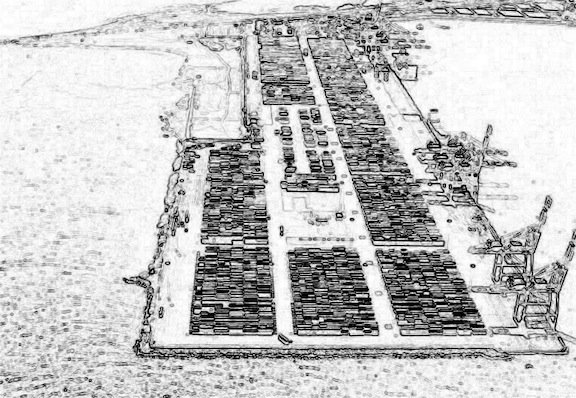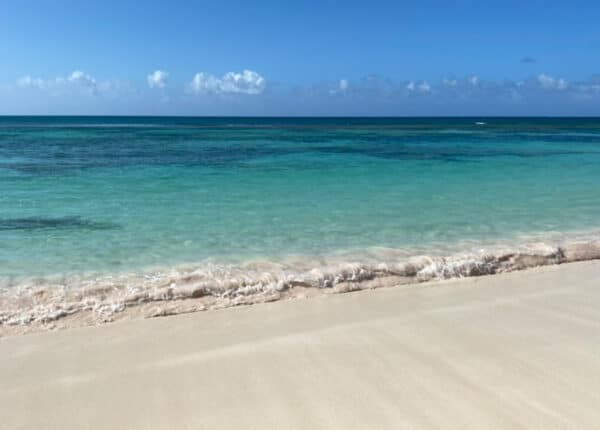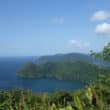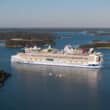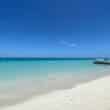Is China’s Plan a Game-Changer For Jamaica’s Logistics Hub?
By Paul Hay
Op-Ed Contributor
To date, I have written three articles about different aspects of Jamaica’s Logistics Hub. This makes my fourth.
Frequent readers of the Caribbean Journal may only be aware of three, counting this one. The first, “The Logistics Hub Project and Jamaica’s Development” explained the opportunity the logistics hub presents for Jamaica’s development. The second, “What History means for the Jamaica Logistics Hub,” illustrated Jamaica’s established strength in such maritime endeavours. By now, some may have already realised that these articles were not arbitrary, but part of what is known as a SWOT analysis: SWOT being an acronym for Strength, Weakness, Opportunity and Threat.
The third article “Preparing for Competition – Strategic Facility Planning for Small and Medium-Sized Businesses” is posted on my blog, and uses the logistics hub as an example in assessing threats: the threat in this instance being the Panama Logistics Hub.
So, the astute will now realise I have to date not touched on the hub’s weaknesses, at least not directly, nor had I intended of do so at this time. But recent events have prompted me to conclude this series, even though details of the initiative have yet to be made public. Recent pronunciations, particularly by public officials have shown a glaring ignorance of the precarious nature of this project, and acting on such ignorance could jeopardize the initiative.
Following my first article, Sheldon Rose – Supply-Chain and International Logistics Professional – pointed out a number of these weaknesses to me.
I had mentioned that the logistics hub initiative would be constructed across four of Jamaica’s south-coast parishes. Sheldon pointed out that legally these nodes could not be separate from each other: legislative changes are required to facilitate the transportation of in-bond goods between the respective nodes of the hub, especially without the direct supervision of the customs department.
Equipment for transhipment ports have to be custom-built and take years to fabricate. Provision needs to be made for handling hazardous materials, including oil-spills. Also, the hub would significantly impact the bio-diversity of its surroundings, so hydrological and environmental studies were needed to analyze the environmental impact.
The Logistics Hub involves the parishes of Kingston, St Thomas, Clarendon and St Catherine.
Starting next year, the Kingston Harbour is to be dredged, and additional berths installed west of the existing piers at the Port of Kingston to accommodate the super-sized vessels that will start coming through the expanded Panama Canal in 2015.
Next, a bunkering and commodity transhipment port will be built in St Thomas; and a dry-dock port, along with cargo and passenger airport built in Clarendon. However, an industrial park – the Caymanas Economic Zone (CEZ) – is also proposed to be built in St. Catherine in the initial stage: only 200 acres being allocated for the park in the first instance but intended to be expanded to 1,000 acres after subsequent developments.
The expansion of the Port of Kingston later incorporated Fort Augusta, in St Catherine. Minister Anthony Hylton had initially pitched the merger of the port expansion and CEZ to China Harbour Engineering Company (CHEC). But Prime Minister Portia Simpson later disclosed in her contribution to the 2013 budget debate that lands at Fort Augusta were insufficient for CHEC plans.
Then, Ronald Mason’s article in the Sunday Gleaner of 18 August 2013 titled “Environment vs. Job, Economic Development” made mention of a US $1.5 billion investment by the Chinese into a development of which Liu Qitao – president of the CHEC parent company, China Communication Construction Company (CCCC) – referred to as the Portland Bight Industrial Park.
The location in question, the Great and Little Goat Islands, are located off the coast of St Catherine. They are the second and third largest islands in the Jamaican archipelago: being 600 and 300 acres respectively in area.
Peter Espeut explains in his Gleaner article “Selling our Birthright”, dated 23 August 2013, that the Goat Islands are connected to each other and to the mainland by mangrove wetlands. The mainland itself is “fringed with hundreds of acres of mangroves” and forms the Galleon Harbour with the Goat Islands. This area has been declared a fish and game sanctuary by the government: being “one of the most fecund fish nurseries” in Jamaica, and a “habitat to thousands of birds”.
Construction is proposed to commence in 2014. The 100-metre high hill on the Great Goat Island is to be “pushed into the sea to cover the wetlands” and create a huge peninsula on which the logistics centre will be built. A further 2,000 acres of land on the mainland is also to be developed, and the seabed dredged to accommodate the super-sized vessels: thus removing coral reefs and shoals in the process.
This Chinese initiative consolidates the industrial park and port facilities, so in-bond goods initially will not have to be transported outside the area. As a matter of fact, this new port is now closer to the prospective cargo airport than was previously envisioned; but, having a toll highway to presently connect the various nodes of the Logistics Hub is not satisfactory.
Rather than focus only on the ecological concerns though, it should also be appreciated that this Chinese initiative offers the logistics hub benefits it never had, including increased size, and should not be taken glibly, especially in the context of Panama’s offerings.
Panama also has ambitions to be the fourth global logistical hub, and it is far advanced in this regard. The Panama Pacifico Project, which has a duration of forty years, has allocated 3,500 acres of land for its industrial park.
Panama’s Colon Free Trade Zone (CFTZ) has been operational since 1947 and now comprises three major ports and an airport, all linked by highway and railway: not to mention the 154 companies that already reside in this logistics park.
Panama has two different organizations managing its ports and has made provision for a third: the operator of Singapore’s Logistics Hub. The Goat Islands alone is no match for this. The original hub initiative alone is no match for this. They complement each other. If not the Goat Islands, what alternate green field site does Jamaica have to offer the Chinese?
But, let me not leave my readers despondent: thinking the initiative is a lost cause.
It is good that Jamaica realise that Panama’s Logistics Hub is a threat to its becoming the fourth global logistics hub, but it should also be realised that the Nicaraguan Canal is also a threat to the Panama Canal.
Jamaica’s strength is in its central geographical location and it is the only hub that can consolidate freight for both canals, as well as tranship freight from either of these canals.
The Chinese initiative cannot be easily dispensed with. It is critical for the success of Jamaica’s logistics aspirations. Jamaica is off to a late start, it cannot afford to drop the baton now. It must decide whether it wants to enter the arena of global trade or be ever satisfied with its meagre tourism, bauxite, and remittance earnings.
Paul Hay, a Caribbean Journal contributor, is the founder and manager of Paul Hay Capital Projects.

